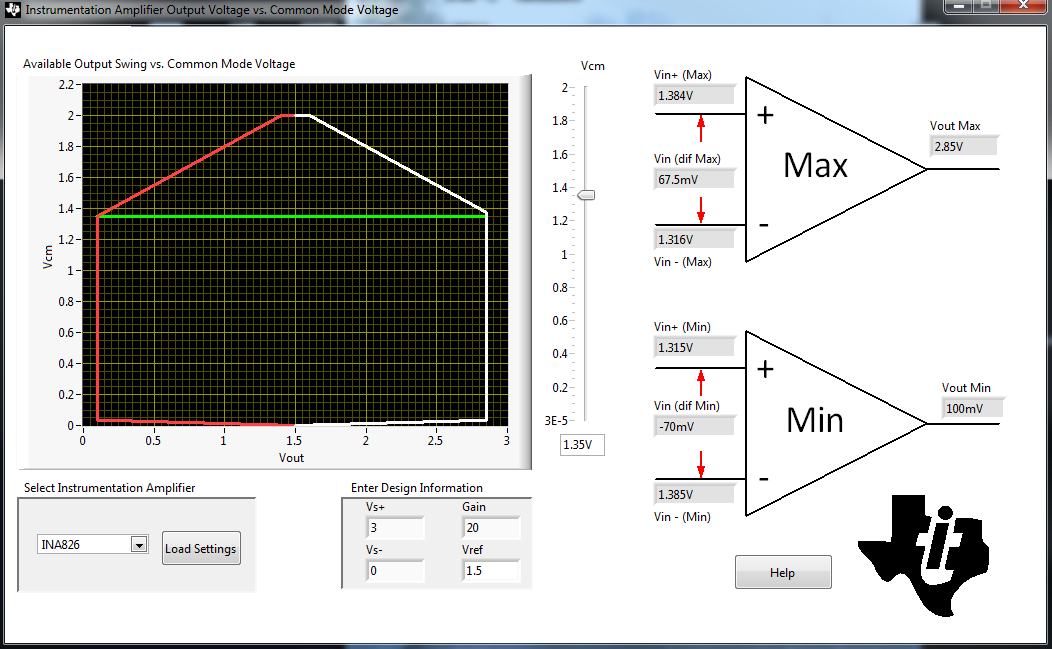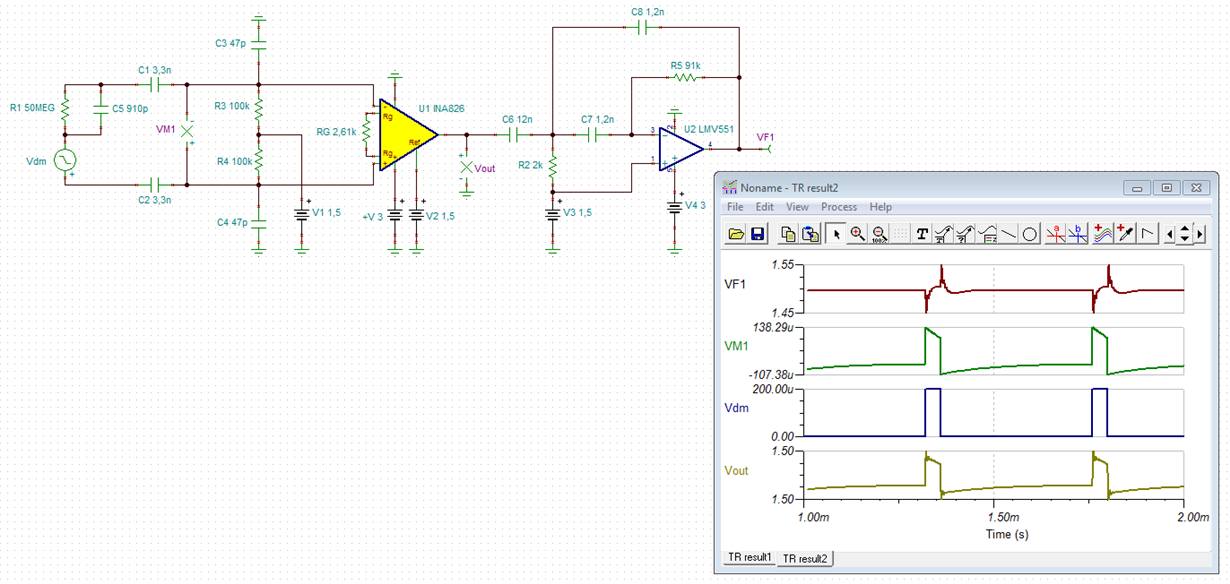Other Parts Discussed in Thread: OPA345, OPA314, INA286, LMV551
Dear E2E team
This is Besson, a electronic engineer from ABB.
we are planning to use INA826 in our Level Measurement project as a pre-amp to face a piezoelectric sensor which will generate a 40us narrow pulse with only 200uVpp amplitude. The equivalent C and R of piezoelectric sensor are 900pF and 30Mohm. The power supply what we used for this project is 3V.
Previously we used opa345 as a pre-amp to achieve 26dB Gain because of low power consumption and low ib, and acceptable slew rate (we want bigger than 1V/us).
When we looked into the details of comparison between opa345 and INA826, we were aware of that the ib is 35nA of INA826 is much bigger than opa345, at the same time, take the 200uVpp signal from sensor into consideration, we worry about if INA826 can handle such lower signal or not, also doubt that if INA826 can provide enough bandwidth to achieve 26dB Gain or not, please help us to comment, many thanks.
By the way, we also looked opa314 as a substitute for better performance than opa345, if there is much better alternatives, please tell us, thanks.
Best regards
Besson










